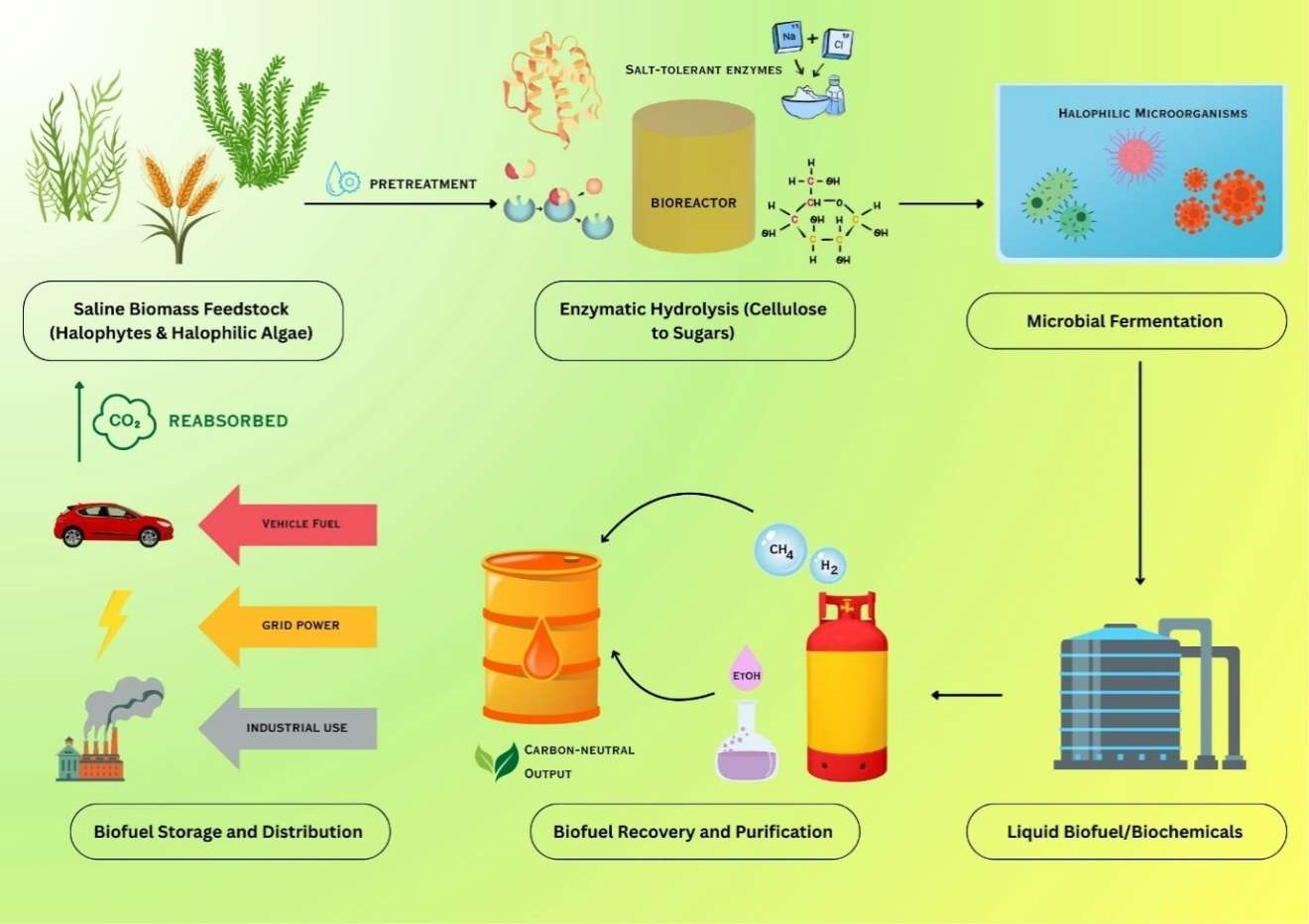Harnessing Enzymes from Halophiles for Sustainable Biofuel Production
DOI:
https://doi.org/10.5530/ctbp.2025.3s.11Keywords:
Extremophiles, Halophiles, Enzymes, Cellulase, Laccase, BiofuelsAbstract
Halophiles are a class of extremophiles that growin salty environments. They have emerged as a valuable repository of many polyextremophilic enzymes, finding diverse industrial applications. Enzymes used in industry must remain stable in challenging operating environments. In this context, the enzymes from extremophiles can be of great use because they are resistant to and capable of catalysis under extreme physical conditions. Halophilic enzymes show great potential for use in industrial applications that involve high salt or hypersaline conditions. Additionally, they have been optimized to function under polyextreme conditions, such as high pH, temperature, and the presence of hydrophobic solvents. Numerous studies have emphasized the wide range of biotechnological applications for these enzymes.Cellulase, xylanase, laccase, lipase, and amylases from halophiles have shown potential for biofuel production. Halophilic cellulase is a primary enzyme that can help in the bioconversion of lignocellulosic biomass into biofuel under harsh conditions. They have also shown tolerance to ionic liquids that can be utilized for the efficient conversion of biomass. Other than halophilic enzymes, halophilic biomasses of microbes, algae, seaweed, and halophytes hold great potential for biofuel production. Bioethanol, biodiesel, biogas, biomethane, and biohydrogen production have been reported by the utilization of biomass of halophiles. Thus, halophiles and their polyextremophilic enzymes hold good potential for biofuel production, and further systematic research and development can be useful for the biorefinery approach.



